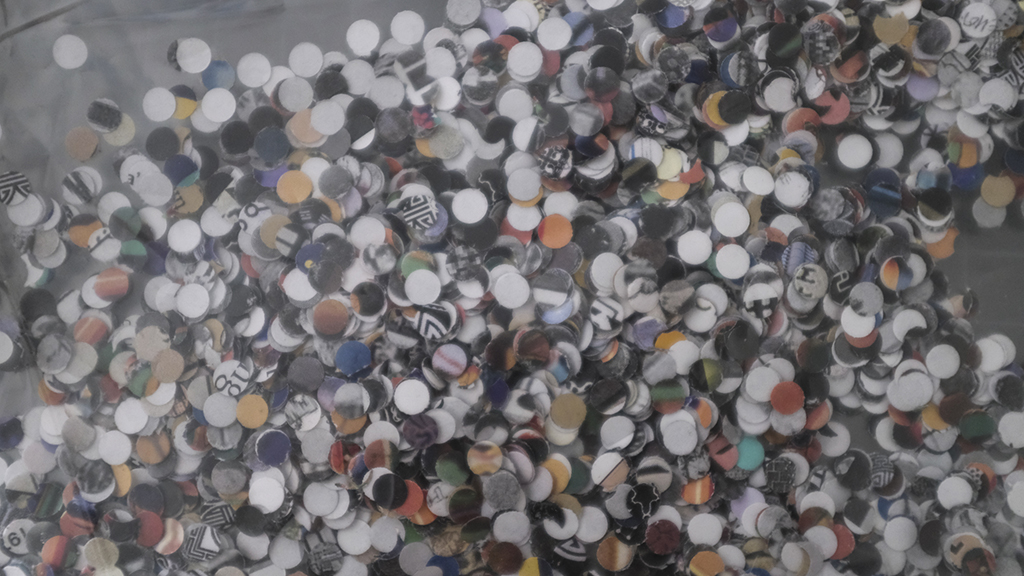
Are you a CBAA member and interested in being considered for our featured artist section? Email a link to your website or 3 images of your work to artistofthemonth@collegebookart.org. We will contact you with more information.
Saneun Hwang
Website: studiosaneun.com
BIOGRAPHY
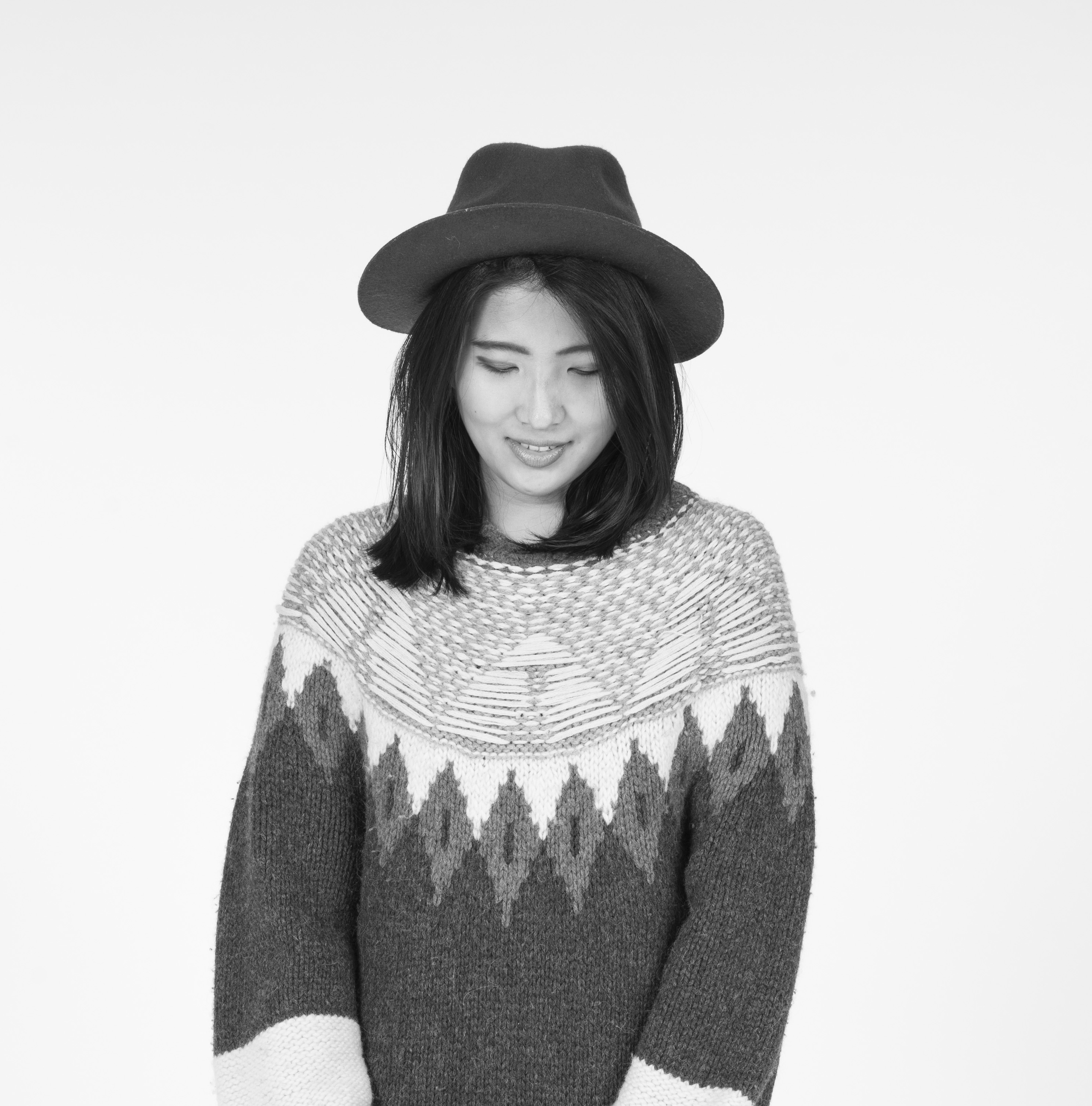 Saneun Hwang is a multidisciplinary artist and designer currently based in New York. She graduated with a BFA Fine Arts from School of Visual Arts in 2017.
Saneun Hwang is a multidisciplinary artist and designer currently based in New York. She graduated with a BFA Fine Arts from School of Visual Arts in 2017.
In her body of work, she attempts to create visual archives of space, time and memory. Her work, interweaves different media such as installation, photography along with various elements, to create an extended form of art. This gives an immersive and interactive experience of space and form. Through her work, she questions the origin of existence, presence and our belonging.
Selected Exhibitions includes Kate Oh Gallery, NY; Korean Culture Center New York, Carrie Able Gallery, Brooklyn; Lazy Susan Gallery, NY. Publications include SVA BFA 20/20 Catalog, Visual opinion, and NYSAI Press. Selected by the Chair’s choices, her thesis work ‘The Deeper The Further” was featured in the School of Visual Arts BFA 20/20 Catalog, which was modulated by Hitomi Iwasaki, the director at the Queens Museum of Art.
ARTIST STATEMENT / Short Version
“A pit pops up in my book Zip and begins its own journey through the pages.” The title Jamsel.zip is a combination of two words. Jamsil is a name of a city in Seoul, South Korea, where I grew up, and Zip refers to a type of archive file format that is used to compress data. I used visual images from various online sources and composed these "found images” into multiple, strip-like sequences, formatting a narrative. In this manner, the book serves as an archive that compresses the story of life in Seoul as well as being a critique of urban development.
The archive has been designed with a goal in mind: to tell the artist’s personal story– both the memories and the anticipation of wandering the city.
ARTIST STATEMENT / Long Version
I was born and raised in Seoul and moved to New York in 2013 to attend a school. Since then, I have been striving as a foreign student and global nomad. When living In Seoul, I really didn’t have to validate where I came from. And never asked what my legal status is. as a newcomer who just landed in a foreign land, I started to have a different perspective about social and cultural identity.
In 2016, I began a journey to create a visual archive that tells a story of where I came from. I started collecting images and materials that I could find in New York. My work expands my upbringing in Korea to New York, from past to present. It is both introspective and revealing.
Those found images create a dense narrative with multiple paths, rewarding both linear and serendipitous exploration. Behind the volume, I wanted to suggest that the form reflects my personal experience, merging memories with the anticipation of wandering the city, offering a visual critique of urban development.
In order to understand my work, people should get into close contact with the work. The object will be displayed on a pedestal and viewers can only experience it by touching and looking at it in its physical form. Secondary mediums, a scroll of prints, will be displayed to support and intensify main event if there is enough space available. The book will be sitting on the pedestal and a puncher will be placed next to it. What audience has to do is punching. Keep punching holes, make the images in the book blurry, abstract and destructive. By transforming the artwork, little by little, viewers’ direct engagement: making “holes” will make another landfill that remind what the book is about. Holes are empty and mysterious. a cavity might get patched up, but another leaked through the other side, never solid, secure or concrete. To sum up, my book serves as a manifestation / visual memoir.
ARTIST'S WQRK
Project Description
The title ‘Jamsil.zip’ is a combination of two words. Jamsil is a name of a city in Seoul, South Korea, where I grew up, and Zip refers to a type of archive file format that is used to compress data. It also stands for postal zip code. Furthermore, in my mother tongue, the pronunciation of Zip, which is spelled ㅈ + ㅣ + ㅂ, sounds the same as “house” (“tzeep”). Not only does it symbolize home, it also means “collection of materials” as a suffix “tzeep” if placed after a noun. The combination of Jamsil and Zip gives the title significant meaning as this work represents an object-like archive that portrays my hometown.
In this manner, the archive reveals a story of an urban city, Jamsil, a small town in Seoul, South Korea, where the artist grew up in, and where the 1988 Seoul Olympics were held. The city that used to be an island for silk-worming a half century ago has now turned into a mainland after massive landfill constructions. Industrial cranes (modern, manmade predators) have taken the place of previous inhabitants. Old low-rise housing went down and has been replaced with elevated tall buildings. The city’s transformation aligns with the artist’s personal life.
However, during this massive construction, several sinkholes have been found around the area. While human activity tends to focus on building, higher and higher, natural processes seem to deconstruct this man-made urban landscape. It wears away the surface of the ground and the hole swallows up what is man-made so that it sinks into oblivion, leaving a tell-tale imprint in the earth.
These visually intriguing incidents beg us to question; “Is the city going back to where it came from?” Theses visual symbols directly pinpoint the fact that a single element can have two different meanings; Pigeons can also be viewed as Doves, a city with high-rise buildings might sink into cavities, and brings to light the relationship between pigeon and domestication, development and deconstruction. sinkholes and island, pigeons and cranes. This book consists of a coherent set of components and the whole becomes the depiction itself. It is encyclopedic, pictorially dense, and depicts social and political issues. At its core, my work discusses historical reconstruction and interpretation, and questions the relationship between artistic depiction and dynamic historical narrative.
My Book Title: Jamsil Zip
Size: 5 x 7.5 inches
Pages: 240p
Year: 2016–2018
Jamsil Zip
Size: 10 x 7.5 inches

Layout of my book
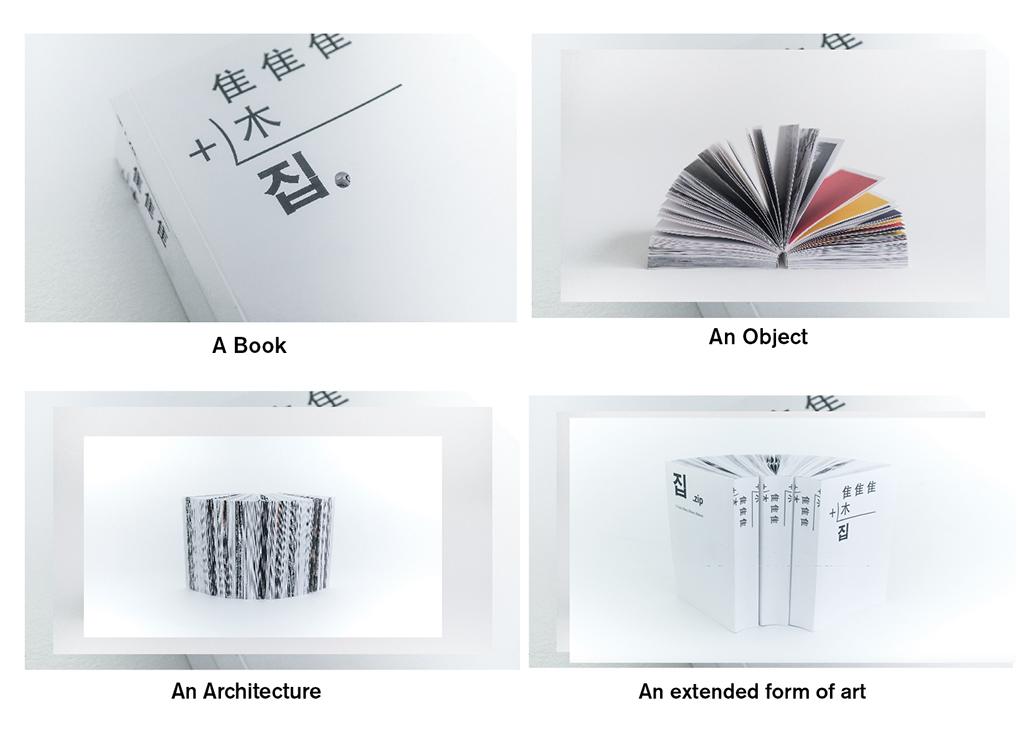
A scroll of prints
Size: 60 x 30 inches
Media: Print on archival paper
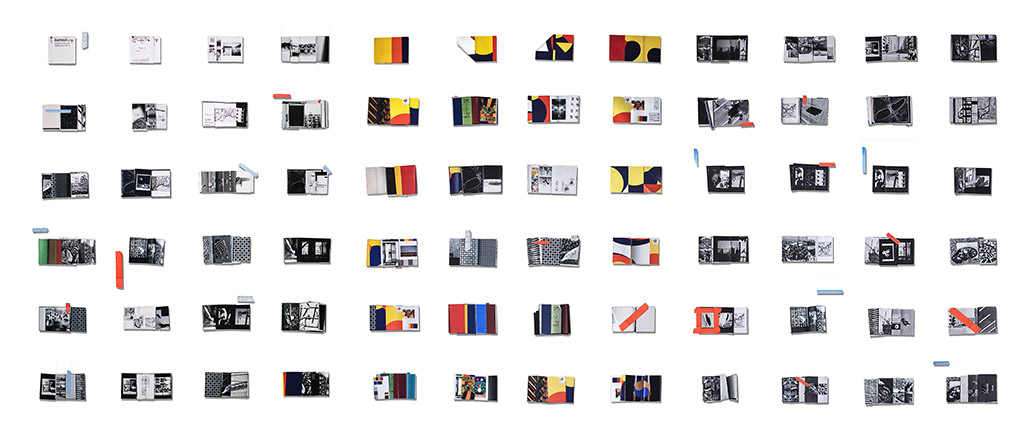
Page view

Page view
Size: 10 x 7.5 inches
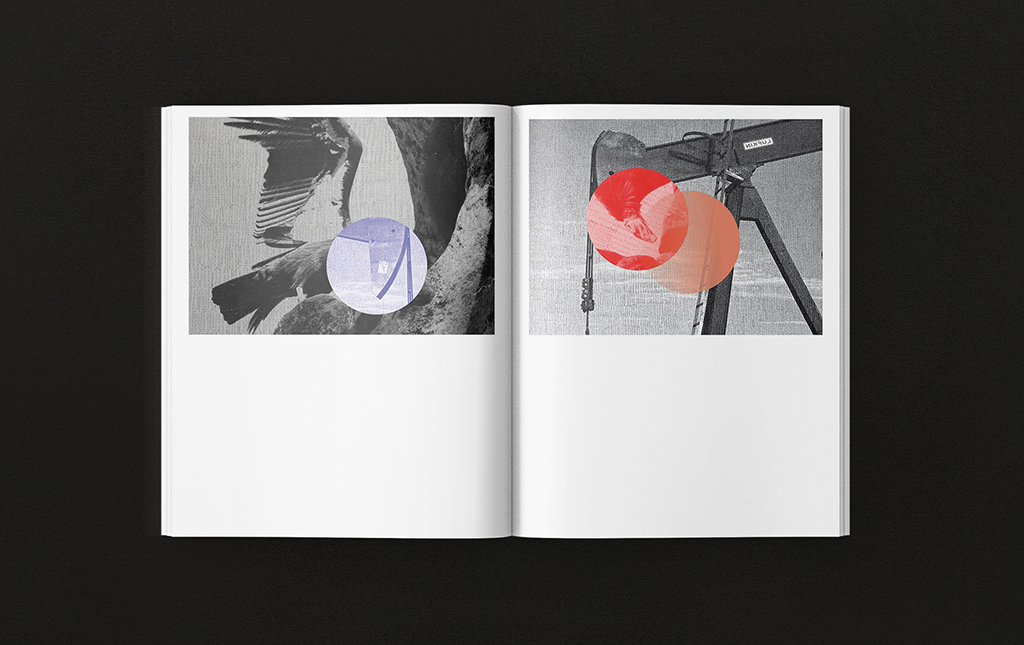
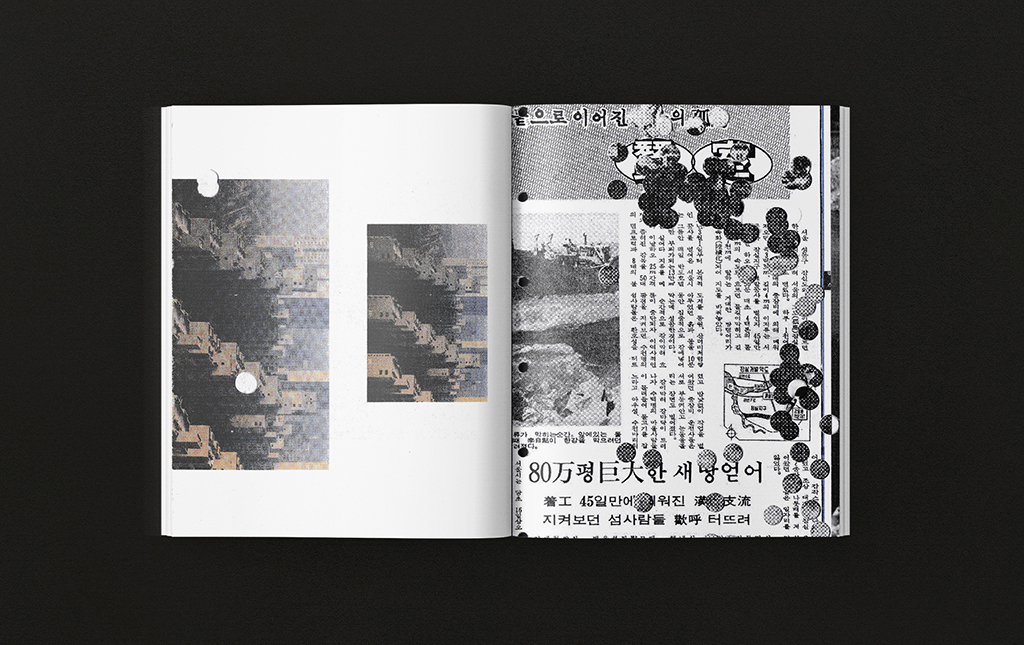
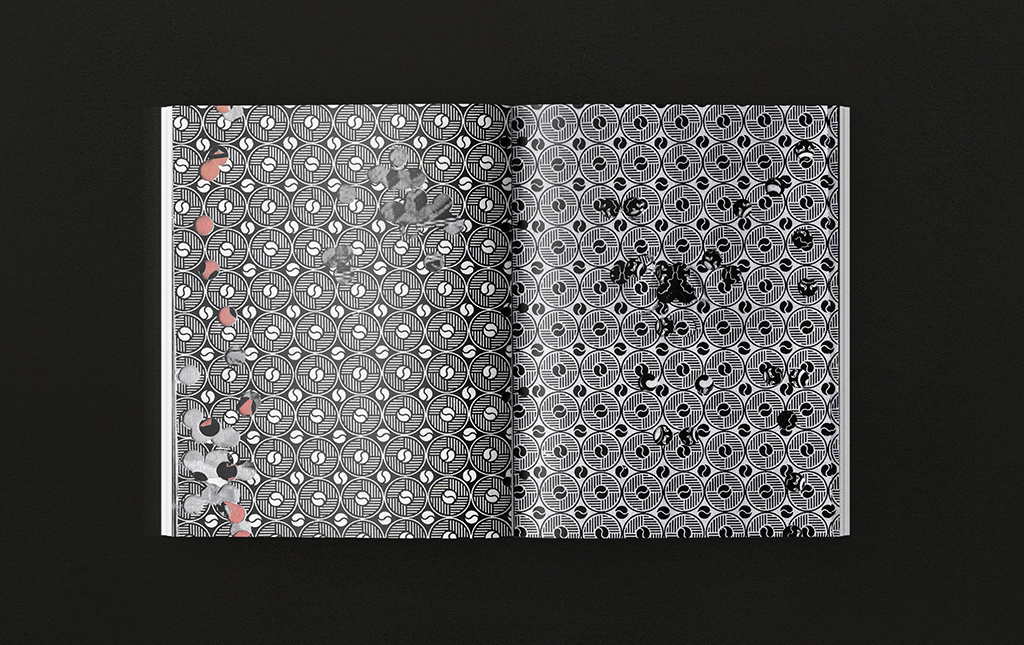
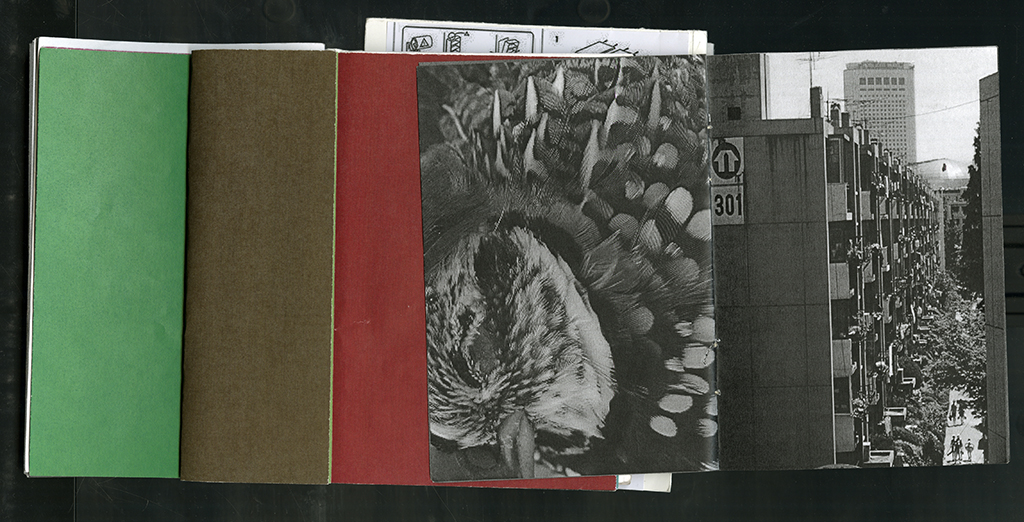
A page from my idea sketchbook
Size: 10 x 7.5 inches

Visual memoir of my book
Size: N/A
Media: Cutout papers from my book
